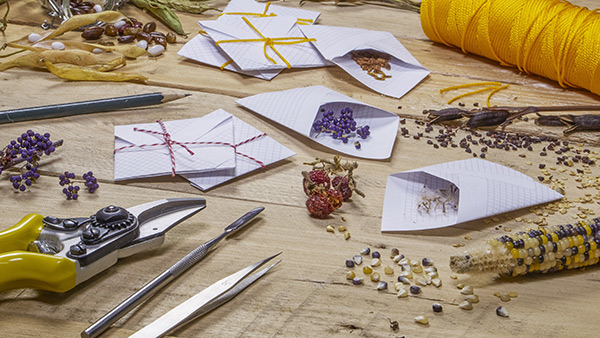
Breaking News
 The Decline Of Boys Participating In Youth Sports Has Led To A Generation Of Soft...
The Decline Of Boys Participating In Youth Sports Has Led To A Generation Of Soft...
 First Arrests Hint At How Billions In California Homeless Dollars Vanished...
First Arrests Hint At How Billions In California Homeless Dollars Vanished...
 Trump Refiles $15 Billion Defamation Lawsuit Against New York Times After Court Dismissal
Trump Refiles $15 Billion Defamation Lawsuit Against New York Times After Court Dismissal
 Can Diet-Changes Really Transform ADHD? One Family's Remarkable Discovery
Can Diet-Changes Really Transform ADHD? One Family's Remarkable Discovery
Top Tech News
 3D Printed Aluminum Alloy Sets Strength Record on Path to Lighter Aircraft Systems
3D Printed Aluminum Alloy Sets Strength Record on Path to Lighter Aircraft Systems
 Big Brother just got an upgrade.
Big Brother just got an upgrade.
SEMI-NEWS/SEMI-SATIRE: October 12, 2025 Edition
 Stem Cell Breakthrough for People with Parkinson's
Stem Cell Breakthrough for People with Parkinson's
 Linux Will Work For You. Time to Dump Windows 10. And Don't Bother with Windows 11
Linux Will Work For You. Time to Dump Windows 10. And Don't Bother with Windows 11
 XAI Using $18 Billion to Get 300,000 More Nvidia B200 Chips
XAI Using $18 Billion to Get 300,000 More Nvidia B200 Chips
 Immortal Monkeys? Not Quite, But Scientists Just Reversed Aging With 'Super' Stem Cells
Immortal Monkeys? Not Quite, But Scientists Just Reversed Aging With 'Super' Stem Cells
 ICE To Buy Tool That Tracks Locations Of Hundreds Of Millions Of Phones Every Day
ICE To Buy Tool That Tracks Locations Of Hundreds Of Millions Of Phones Every Day
 Yixiang 16kWh Battery For $1,920!? New Design!
Yixiang 16kWh Battery For $1,920!? New Design!
 Find a COMPATIBLE Linux Computer for $200+: Roadmap to Linux. Part 1
Find a COMPATIBLE Linux Computer for $200+: Roadmap to Linux. Part 1
Home gardening tips: For how long can you store vegetable seeds?

(Natural News) Growing your own food gives you access to fresh fruits and vegetables – something that is invaluable post-SHTF.
Knowing how to store seeds properly ensures that you're always ready for the next planting season. To the untrained eye, dry and brittle seeds may seem useless. However, gardeners know that vegetable seeds are key to starting and maintaining a bountiful garden. (h/t to GardenerThumb.com)
Seed germination rates
If you're not sure where to start, check out this chart of how long vegetable seeds last.
Asparagus (can remain viable for three to five years) – 50 percent germination for five years. Commercial seeds must be at least 75 percent viable.
Beans (can remain viable for three years) – 50 percent germination for three years. Commercial seeds must be at least 80 percent viable.
Brussels sprouts (can remain viable for four years) – 50 percent germination for five years. Commercial seeds must be at least 75 percent viable.
Carrots (can remain viable for three years) – Germination rates decline after three years. Commercial seeds must be at least 55 percent viable.
Corn (can remain viable for three years) – 50 percent germination for three years. Commercial seeds must be at least 75 percent viable.
Dill (can remain viable for four to five years) – 50 percent germination for five years.
Eggplant (can remain viable for five to seven years) – 50 percent germination for five years. Commercial seeds must be at least 60 percent viable
Lettuce (can remain viable for five years) – 50 percent germination for five years. Commercial seeds must be at least 75 percent viable.
Onion (can remain viable for one to two years) – 50 percent germination for two years. Commercial seeds must be at least 70 percent viable.
Pumpkin (can remain viable for four to six years) –50 percent germination for six years. Commercial seeds must be at least 75 percent viable
Radish (can remain viable for five years) – 50 percent germination for five years. Commercial seeds must be at least 75 percent viable.
Squash (can remain viable for four to six years) – 50 percent germination for six years. Commercial seeds must be at least 75 percent viable.
Tomatoes (can remain viable for four to 10 years) – Commercial seeds must be at least 75 percent viable.
Zucchini (can remain viable for four to six years) – 50 percent germination for six years. Commercial seeds must be at least 75 percent viable
Seed storage methods
Storing seeds properly ensures that you have good samples when testing for viability.
Drying
When gathering seeds from your own crops, spread the seeds on a newspaper and let them air dry for one week. Label the seeds so you don't get confused while drying. (Related: A crash course in intensive gardening.)
Once the seeds are dry, pack the seeds into small envelopes or paper packets. Label each envelope or packet with the plant name and other details.
Alternatively, you can dry saved seeds on paper towels. The seeds will stick to the towels when dry. Roll paper towels with seeds tightly before storing them. When it's planting season, tear off bits of the towel one seed at a time then plant the seed and towel right in the soil.
When saving your own seeds, plant open-pollinated varieties because they will come back true while hybrids won't.



